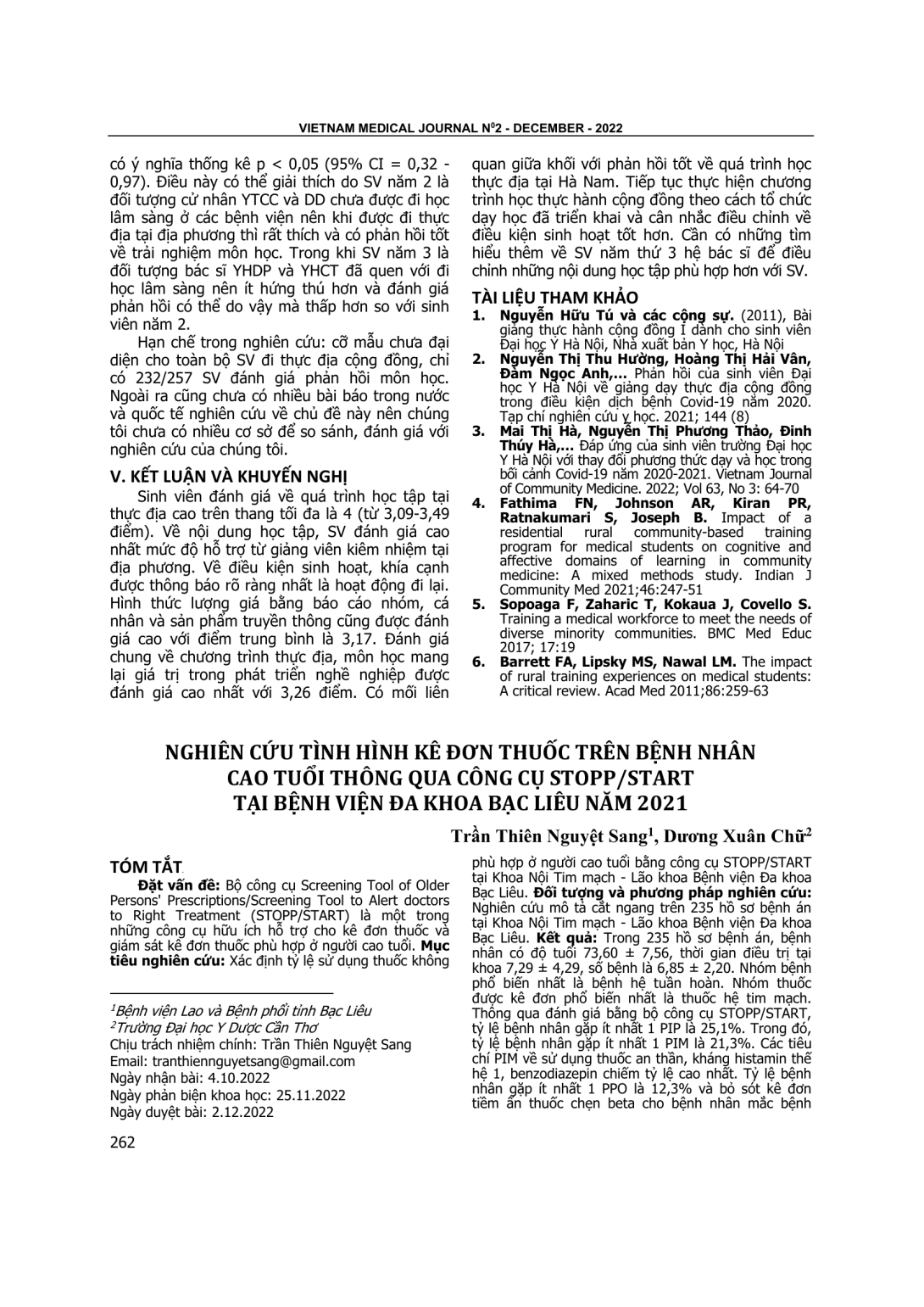
Xác định tỷ lệ sử dụng thuốc không phù hợp ở người cao tuổi bằng công cụ STOPP/START tại Khoa Nội Tim mạch - Lão khoa Bệnh viện Đa khoa Bạc Liêu. Đối tượng và phương pháp nghiên cứu: Nghiên cứu mô tả cắt ngang trên 235 hồ sơ bệnh án tại Khoa Nội Tim mạch - Lão khoa Bệnh viện Đa khoa Bạc Liêu. Kết quả: Trong 235 hồ sơ bệnh án, bệnh nhân có độ tuổi 73,60 ± 7,56, thời gian điều trị tại khoa 7,29 ± 4,29, số bệnh là 6,85 ± 2,20. Nhóm bệnh phổ biến nhất là bệnh hệ tuần hoàn. Nhóm thuốc được kê đơn phổ biến nhất là thuốc hệ tim mạch. Thông qua đánh giá bằng bộ công cụ STOPP/START, tỷ lệ bệnh nhân gặp ít nhất 1 PIP là 25,1%. Trong đó, tỷ lệ bệnh nhân gặp ít nhất 1 PIM là 21,3%. Các tiêu chí PIM về sử dụng thuốc an thần, kháng histamin thế hệ 1, benzodiazepin chiếm tỷ lệ cao nhất. Tỷ lệ bệnh nhân gặp ít nhất 1 PPO là 12,3% và bỏ sót kê đơn tiềm ẩn thuốc chẹn beta cho bệnh nhân mắc bệnh thiếu máu cục bộ cơ tim chiếm tỷ lệ cao nhất. Kết luận: Tình hình kê đơn thuốc phù hợp cao, tuy nhiên vẫn còn những bất cập trong kê đơn thuốc cho bệnh nhân cao tuổi.
Determining the rate of inappropriate drug use in elderly patients by the STOPP/START criteria at the Department of Cardiology and Geriatrics, Bac Lieu General Hospital. Materials and methods: A cross-sectional descriptive study with an analysis of 235 medical records at the Department of Cardiology and Geriatrics, Bac Lieu General Hospital. Results: In 235 medical records, the patients's age was 73.60 ± 7.56, the duration of treatment at the Department was 7.29 ± 4.29, the number of diseases was 6.85 ± 2.20. The most common group of diseases are diseases of the circulatory system. The most commonly prescribed class of medicine are cardiovascular system medicine. Through applying the STOPP/START criteria, the percentage of patients had at least one PIP was 25.1%. In which, the rate of patients had at least one PIM was 21.3%. PIM criteria on the use of sedatives, first-generation H1-antihistamines, and benzodiazepines accounted for the highest percentage. The proportion of patients with at least one PPO was 12.3% and potential prescribing omissions that using beta-blocker with ischaemic heart disease accounted for the highest proportion. Conclusions: The situation of prescribing appropriate drugs is high, but there are still shortcomings in prescribing drugs for elderly patients.
- Đăng nhập để gửi ý kiến
